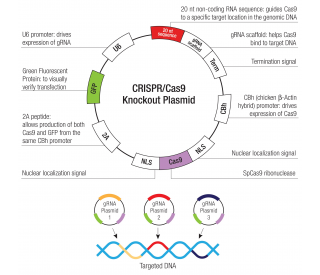Purity
>95%, by SDS-PAGE visualized with Silver Staining and quantitative densitometry by Coomassie® Blue Staining.
Endotoxin Level
<0.10 EU per 1 μg of the protein by the LAL method.
Activity
Measured by its binding ability in a functional ELISA. When Recombinant Human LILRB3/CD85a/ILT5 is coated at 2 μg/mL, Recombinant Human Angiopoietin-like 7 (Catalog # ) binds with an ED 50 = 50-300 ng/mL.
Source
Human embryonic kidney cell, HEK293-derived Gly24-Glu443, with a C-terminal 6-His tag
Accession #
N-terminal Sequence
AnalysisGly24
Predicted Molecular Mass
47 kDa
SDS-PAGE
60-69 kDa, reducing conditions
9159-T5 |
| |
Formulation Lyophilized from a 0.2 μm filtered solution in PBS. | ||
Reconstitution Reconstitute at 100 μg/mL in PBS. | ||
Shipping The product is shipped at ambient temperature. Upon receipt, store it immediately at the temperature recommended below. | ||
Stability & Storage: Use a manual defrost freezer and avoid repeated freeze-thaw cycles.
|
Data Images
Bioactivity
| When Recombinant Human LILRB3/CD85a/ILT5 (Catalog # 9159-T5) is coated onto a microplate at 2 µg/mL, Recombinant Human Angiopoietin-like 7 (Catalog # ) binds with an ED50 of 50-300 ng/mL. |
Background: LILRB3/CD85a/ILT5
Leukocyte immunoglobulin-like receptor subfamily B (LILRB3), also known as ILT5, LIR3, and CD85a, is an immunoglobulin superfamily member that is involved in immune regulation. Subfamily B members have cytoplasmic immunoreceptor tyrosine-based inhibitory motifs (ITIMs) that inhibit signaling events via phosphatase SHP-1. Subfamily A members are activating receptors that lack ITIMs and signal through association with FcR gamma (1, 2). Mature LILRB3 is a highly polymorphic 85-95 kDa glycoprotein that consists of a 420 amino acid (aa) extracellular domain (ECD) with four Ig-like domains, a 21 aa transmembrane segment, and a 167 aa cytoplasmic domain with three ITIMs (3). Alternative splicing generates an isoform with a 17 aa insertion in the juxtamembrane ECD. In mouse and rat, the LILRB3 gene encodes the PIR-B protein which has six Ig-like domains. Rodent PIR-B and human LILRB3 share 55% aa sequence identity within common regions of their ECDs. LILRB3 is expressed on the surface of peripheral monocytes, neutrophils, eosinophils, basophils, and mast cell progenitors (4-6). Triggering of LILRB3 inhibits the activation of macrophages, mast cells, neutrophils, basophils, and B cells (5, 7). On osteoclast precursors, LILRB3 ligation inhibits RANK L/TRANCE or M-CSF induced differentiation (8). LILRB3 can also bind to ligands exposed on necrotic tumor cells (9). Both PIR-B and LILRB3 are receptors for S. aureus, and activation of these receptors by bacteria influences the innate immune response triggered by TLRs (3). R&D Systems in-house testing indicates that LILRB3 binds to
Angiopoietin-like 7, consistent with the demonstrated functional interactions between other members of these protein families (10). In the mouse CNS, PIR-B functions as a receptor for the myelin proteins Nogo, MAG, and OMgp and mediates their inhibitory action on neurite outgrowth and axon regeneration (11). Upon binding to MAG, PIR-B associates with TrkB and NGF R/p75 in cerebellar granule neurons (12).
References:
Thomas, R. et al. (2010) Clin. Rev. Allergy Immunol. 38:159.
Anderson, K.J. and R.L. Allen (2009) Immunology 127:8.
Nakayama, M. et al. (2007) J. Immunol. 178:4250.
Tedla, N. et al. (2003) Proc. Natl. Acad. Sci. USA 100:1174.
Sloane, D.E. et al. (2004) Blood 104:2832.
Tedla, N. et al. (2008) J. Leukoc. Biol. 83:334.
Uehara, T. et al. (2001) J. Clin. Invest. 108:1041.
Mori, Y. et al. (2008) J. Immunol. 181:4742.
Jones, D.C. et al. (2016) Oncotarget PMID 26769854.
Zheng, J. et al. (2012) Nature 485:656.
Atwal, J.K. et al. (2008) Science 322:967.
Fujita, Y. et al. (2011) Cell Death Dis. 2:e198.
Entrez Gene IDs:
11025 (Human)
Alternate Names:
CD85 antigen-like family member A; CD85a antigen; CD85a; HL9Immunoglobulin-like transcript 5; ILT5; ILT-5; ILT5CD85a; Leukocyte immunoglobulin-like receptor 3; leukocyte immunoglobulin-like receptor subfamily B member 3; leukocyte immunoglobulin-like receptor, subfamily B (with TM and ITIM domains); LILRB3; LIR3; LIR3CD85A; LIR-3MGC138403; member 3; Monocyte inhibitory receptor HL9; PIRB










